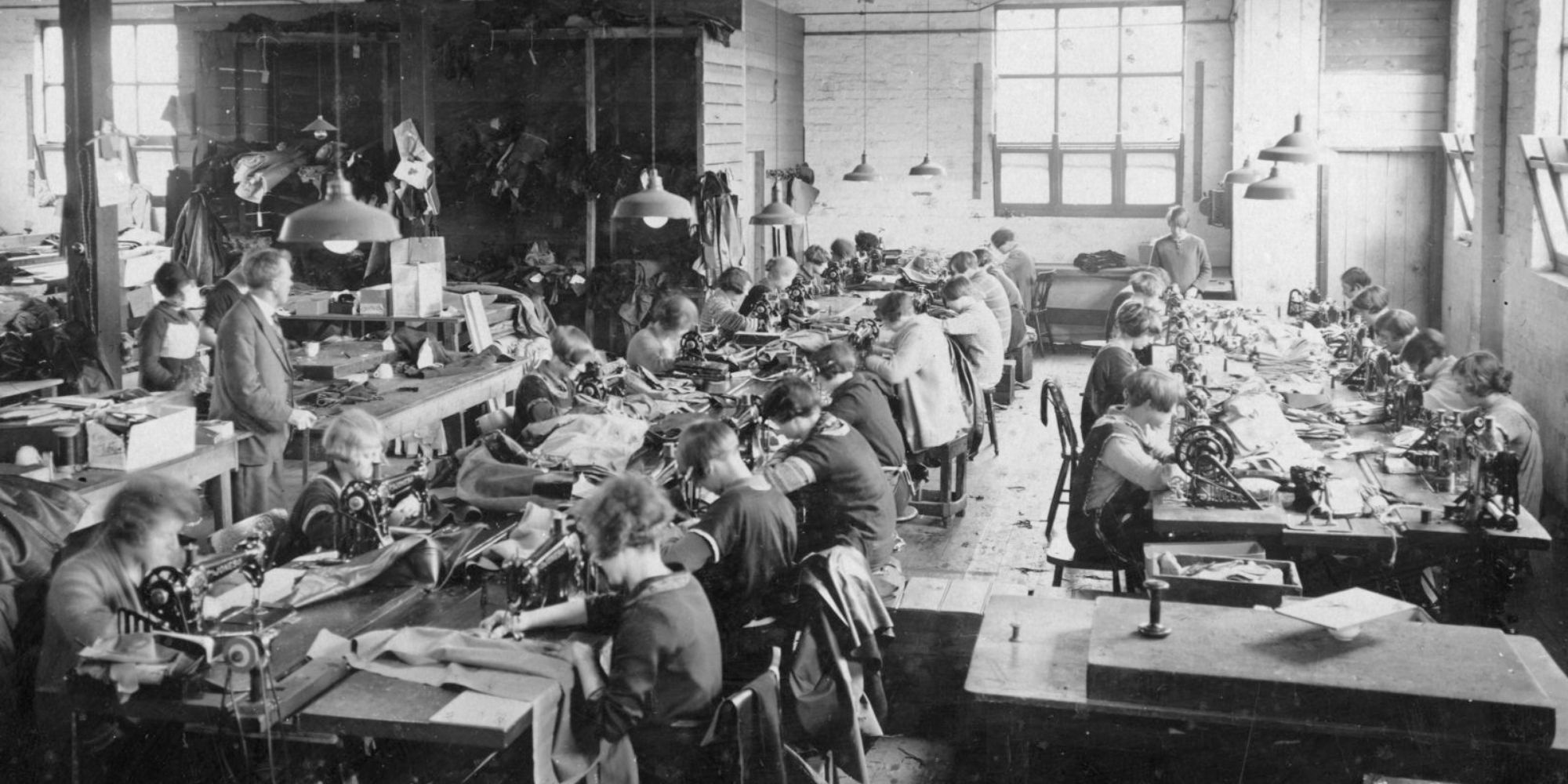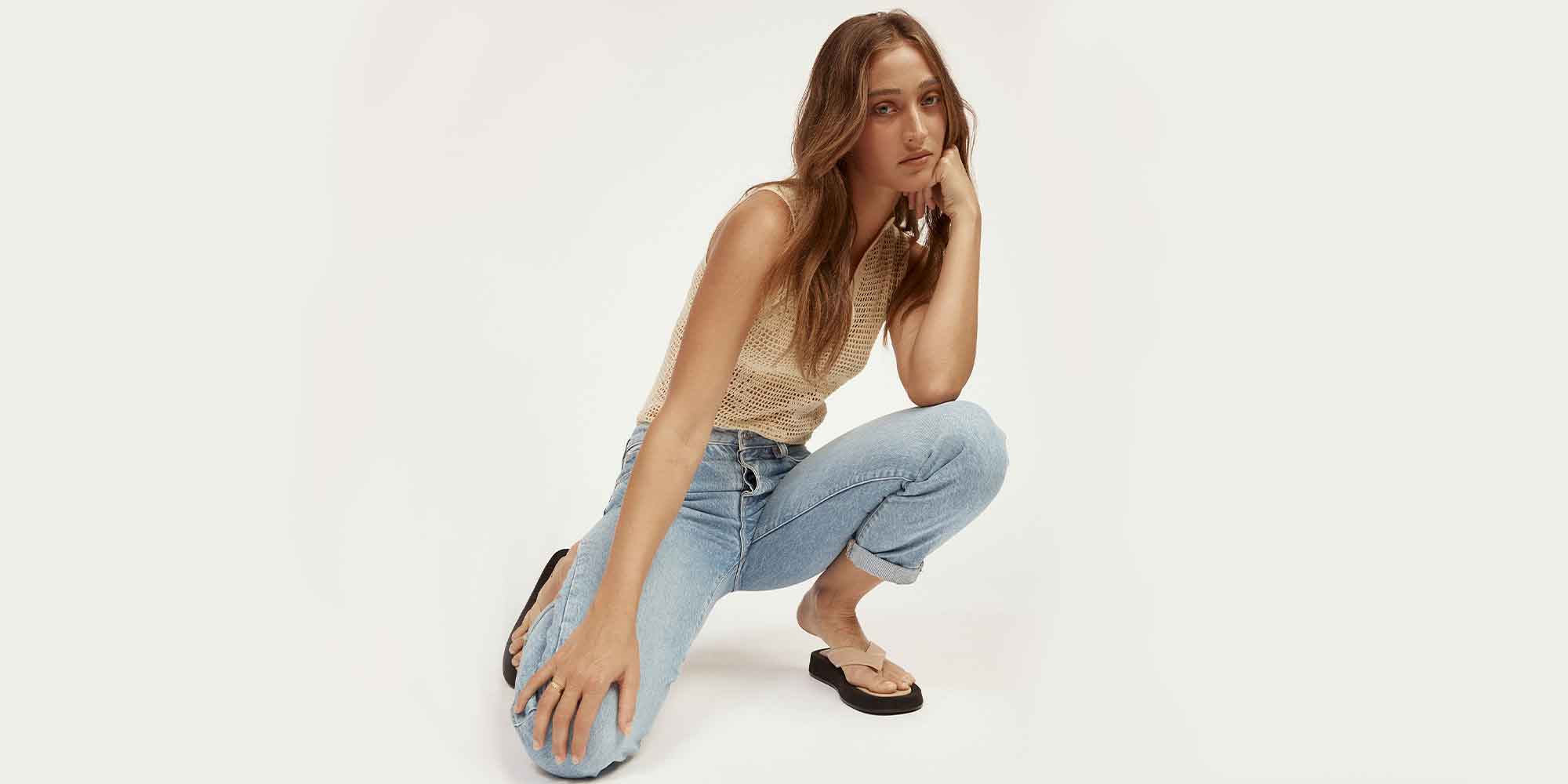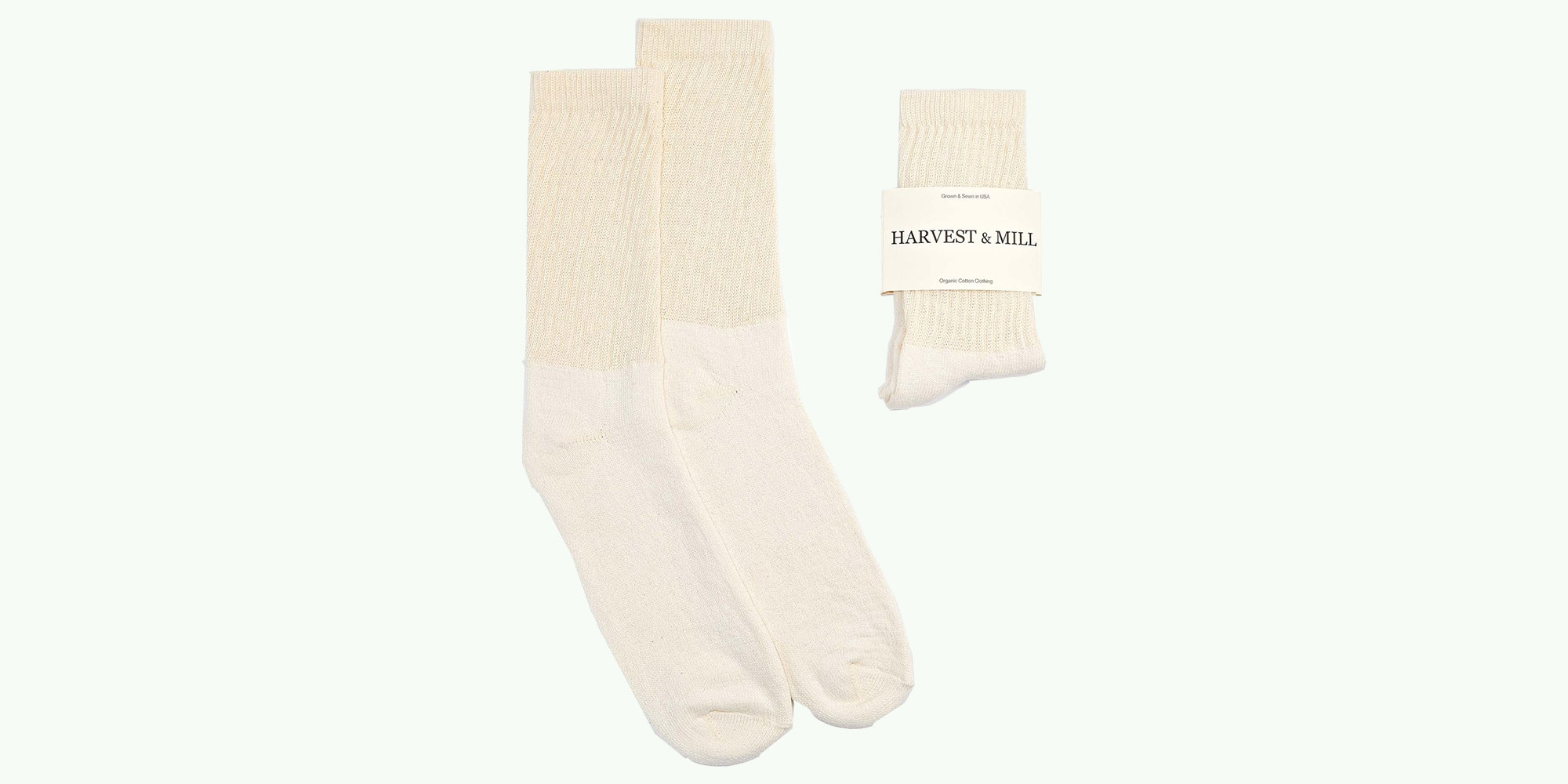Fashion and Beauty Candidates Must Build Personal Brand on Instagram to Get Hired in 2019
Clothes shopping used to be an occasional upshot—something that happened a few times a year when the seasons changed or when nosotros outgrew what we had. But nigh 20 years ago, something inverse. Clothes became cheaper, tendency cycles sped up, and shopping became a hobby. Enter fast fashion and the global chains that now boss our high streets and online shopping . But what is fast way? And how does information technology impact people, the planet, and animals?
It was all too skillful to be truthful. All these stores selling absurd, trendy clothing you could buy with your loose alter, wear a scattering of times, and so throw abroad. Of a sudden everyone could afford to dress like their favourite glory or wear the latest trends fresh from the catwalk.
Then in 2013, the world had a reality check when the Rana Plaza habiliment manufacturing circuitous in People's republic of bangladesh collapsed , killing over i,000 workers. That's when consumers really started questioning fast fashion and wondering at the true cost of those $v t-shirts . If yous're reading this commodity, you might already be aware of fast fashion's dark side, but information technology's worth exploring how the manufacture got to this point—and how we can help to change it.
What is fast manner?
Fast style can be divers as cheap, trendy clothing that samples ideas from the catwalk or glory culture and turns them into garments in loftier street stores at breakneck speed to meet consumer demand. The idea is to get the newest styles on the marketplace as fast as possible, so shoppers can snap them up while they are still at the pinnacle of their popularity and so, sadly, discard them later on a few wears. It plays into the thought that outfit repeating is a fashion imitation pas and that if you lot desire to stay relevant, you take to sport the latest looks equally they happen. Information technology forms a fundamental part of the toxic system of overproduction and consumption that has made mode one of the world'southward largest polluters. Earlier we tin can go most changing it, let's take a look at the history.
How did fast manner happen?
To understand how fast fashion came to be, nosotros need to rewind a flake. Before the 1800s, mode was slow. You had to source your own materials like wool or leather, prepare them, weave them, and then make the clothes.
The Industrial Revolution introduced new technology—similar the sewing automobile. Clothes became easier, quicker, and cheaper to make. Dressmaking shops emerged to cater to the eye classes.
Many of these dressmaking shops used teams of garment workers or home workers. Around this time, sweatshops emerged, along with some familiar safe issues. The first significant garment factory disaster was when a burn broke out in New York's Triangle Shirtwaist Mill in 1911. Information technology claimed the lives of 146 garment workers, many of whom were immature female immigrants .
Past the 1960s and 70s, immature people were creating new trends, and clothing became a course of personal expression, just there was notwithstanding a distinction between high mode and high street.
In the tardily 1990s and 2000s, low-cost way reached a superlative. Online shopping took off, and fast-fashion retailers like H&M, Zara, and Topshop took over the high street. These brands took the looks and design elements from the top fashion houses and reproduced them rapidly and cheaply. With everyone at present able to shop for on-trend clothes whenever they wanted, information technology's easy to sympathise how the phenomenon defenseless on.

How to spot a fast style brand
Some central factors are common to fast way brands:
- Thousands of styles, which touch on all the latest trends.
- Extremely short turnaround time between when a tendency or garment is seen on the catwalk or in celebrity media and when it hits the shelves.
- Offshore manufacturing where labour is the cheapest, with the use of workers on depression wages without adequate rights or safe and complex supply chains with poor visibility beyond the first tier.
- A limited quantity of a particular garment—this is an idea pioneered by Zara. With new stock arriving in store every few days, shoppers know if they don't buy something they like, they'll probably miss their chance.
- Cheap, low quality materials like polyester , causing clothes to degrade afterward only a few wears and get thrown away.
What'due south the impact of fast mode?
On the planet
Fast style's impact on the planet is immense . The pressure level to reduce costs and speed up production time ways that ecology corners are more likely to exist cut. Fast manner's negative touch includes its use of cheap, toxic textile dyes—making the fashion manufacture the second largest polluter of clean h2o globally later on agriculture. That's why Greenpeace has been pressuring brands to remove dangerous chemicals from their supply bondage through its detoxing manner campaigns through the years.
Inexpensive textiles also increase fast fashion's bear on. Polyester is one of the nearly pop fabrics. It is derived from fossil fuels, contributes to global warming, and can shed microfibres that add to the increasing levels of plastic in our oceans when washed. Just even 'natural fabrics' can be a problem at the scale fast fashion demands. Conventional cotton requires enormous quantities of h2o and pesticides in developing countries. This results in drought risks and creates extreme stress on water basins and competition for resources between companies and local communities.
The constant speed and need mean increased stress on other environmental areas such as state clearing, biodiversity, and soil quality. The processing of leather besides impacts the environment, with 300kg of chemicals added to every 900kg of animal hides tanned.
The speed at which garments are produced likewise means that more than and more clothes are disposed of by consumers, creating massive textile waste. In Australia solitary, more 500 one thousand thousand kilos of unwanted clothing ends up in landfill every year.
On workers
Likewise as the ecology toll of fast fashion, in that location's a human cost.
Fast fashion impacts garment workers who work in dangerous environments, for low wages, and without cardinal human rights. Further down the supply chain, the farmers may work with toxic chemicals and brutal practices that can take devastating impacts on their physical and mental health, a plight highlighted by the documentary The True Price .
On animals
Animals are besides impacted past fast way. In the wild, the toxic dyes and microfibres released in waterways are ingested by land and marine life alike through the food chain to devastating consequence. And when animate being products such as leather, fur, and fifty-fifty wool are used in fashion directly, animal welfare is put at adventure. As an example, numerous scandals reveal that real fur, including cat and dog fur, is oft existence passed off as false fur to unknowing shoppers. The truth is that in that location is so much real fur being produced nether terrible weather in fur farms that it'due south get cheaper to produce and buy than false fur!
On consumers
Finally, fast fashion can impact consumers themselves, encouraging a 'throw-away' culture considering of both the built-in obsolescence of the products and the speed at which trends emerge. Fast fashion makes united states believe we demand to shop more and more to stay on height of trends, creating a abiding sense of need and ultimate dissatisfaction. The trend has also been criticised on intellectual holding grounds, with some designers alleging that retailers have illegally mass-produced their designs.
Who are the big players?
Many retailers nosotros know today as the fast way large players, like Zara or H&M , started as smaller shops in Europe around the 1950s. Technically, H&M is the oldest of the fast fashion giants , having opened as Hennes in Sweden in 1947, expanding to London in 1976, and before long, reaching the States in 2000.
Zara follows, which opened its first store in Northern Kingdom of spain in 1975 . When Zara landed in New York at the start of the 1990s, people first heard the term 'fast fashion'. It was coined by the New York Times to draw Zara's mission to have only 15 days for a garment to get from the design phase to existence sold in stores.
Other big names in fast style today include UNIQLO, GAP, Primark, and TopShop. While these brands were one time seen as radically cheap disruptors, in that location are now even cheaper and faster alternatives similar Missguided, Forever 21, Zaful, Boohoo, and Mode Nova. Thankfully, there are upstanding alternatives worth your back up .
Is fast manner going dark-green?
As an increasing number of consumers call out the true cost of the fashion industry, and especially fast way, nosotros've seen a growing number of retailers introduce sustainable and ethical mode initiatives such as in-shop recycling schemes. These schemes allow customers to drop off unwanted items in 'bins' in the brands' stores. But information technology'south been highlighted that only 0.i% of all clothing collected past charities and have-dorsum programs is recycled into new fabric fibre.
The underlying event with fast fashion is the speed at which it is produced, putting massive pressure on people and the environment. Recycling and modest eco or vegan clothing ranges—when they are not only for greenwashing —are non plenty to counter the 'throw-away civilization', the waste, the strain on natural resources, and the myriad of other problems created by fast fashion. The whole system needs to be changed.
Is fast fashion in decline?
We are starting to see some changes in the fashion industry. The anniversary of the Rana Plaza collapse is now Fashion Revolution Week , where people all over the world ask, "Who Made My Apparel?". Fashion Revolution declares that "we don't want our clothes to exploit people or destroy our planet".
Millennials and Gen Zers, the drivers of the hereafter economy, may not have caught the fast fashion issues. Some have argued that this generation has "grown also clever for mindless consumerism, forcing producers to become more ethical, more inclusive, and more than liberal" .
There is likewise a growing interest in moving towards a more round fabric production model, reusing materials wherever and whenever possible. In 2018 both Vogue Australia and Elle Uk defended unabridged magazine bug to sustainable fashion, a trend beingness taken upward each twelvemonth by more than and more big names.
What can we exercise?
At Good On You, we dear this quote by British designer Vivienne Westwood, " purchase less, choose well, brand it last ."
Buying Less is the start step—endeavor to fall back in love with the clothes you already ain by styling them differently or even 'flipping' them. Why not turn those old jeans into some trendy unhemmed shorts , or give that baggy old jumper new life by turning it into a crop ? Creating a sheathing wardrobe is also worth considering on your upstanding fashion journey.
Choose Well is the 2d step, and choosing an eco-friendly textile is essential here. There are pros and cons to all fibre types, as seen in our ultimate guide to wearable materials, but there is a helpful chart at the end to refer to when purchasing. Choosing well could also hateful committing to simply shopping second paw , or from sustainable brands like those beneath.
Finally, we should Make Information technology Final and look after our clothes by following the care instructions, wearing them until they are worn out , mending them wherever possible, then responsibly recycling them at the very finish of their life.
Learn nigh fast mode's sustainable alternative, slow fashion.
Here are our favourite brands giving fast style the flick and embodying a slow, circular, more sustainable way of wearing:
Whimsy + Row

Whimsy + Row is an eco-conscious lifestyle brand born out of a love for quality goods and sustainable practices. Since 2014, its mission has been to provide ease and elegance for the modernistic, sustainable woman. Whimsy + Row utilises deadstock fabric, and by limiting each garment to brusk runs, the brand also reduces packaging waste and takes care of precious water resources. Detect most products in XS-XL.
Meet the rating.
Shop Whimsy + Row.
Shop Whimsy + Row @ Earthkind.
Afends

Afends is an Australia-based way brand leading the way in organic hemp way, using renewable energy in its supply chain to reduce its climate impact. You tin can discover the full range in sizes XS-Forty.
See the rating.
Shop Afends.
Outland Denim

Outland Denim makes premium denim jeans and clothes, and offers ethical employment opportunities for women rescued from human trafficking in Kingdom of cambodia. This Australian make was founded as an avenue for the grooming and employment of women who take experienced sex trafficking. Find most of the brand's range in United states of america sizes 22-34.
See the rating.
Shop Outland Denim.
Yep Friends

Yes Friends is a UK-based fashion make that creates sustainable, upstanding, and affordable habiliment for everyone. Aye Friends' t-shirts cost less than £iv to make and the make only charges £7.99. Using big calibration production and direct to consumer margins means Yes Friends can charge you an affordable price for a sustainable and ethical t-shirt. Observe the tees in sizes 2XS to 2XL.
See the rating.
Store Yes Friends.
Harvest & Manufacturing plant

Harvest & Manufactory pieces are grown, milled, and sewn exclusively in the The states, supporting American organic cotton farmers and local sewing communities. The brand makes basics for everyone, always ensuring they are not dyed or bleached, greatly reducing the use of h2o, free energy, and dye materials. Even better, past cultivating different varieties of cotton, the brand is able to bolster biodiversity, which is essential for ensuring good for you ecosystems and keeping our planet resilient in the face up of climatic change.
See the rating.
Shop Harvest & Manufacturing plant.
Store Harvest & Mill @ Rêve en Vert.
Editor's note
Images via Unsplash, Manner Revolution, and the brands mentioned. Expert On You publishes the earth's most comprehensive ratings of mode brands' impact on people, the planet and animals. Use our Directory to search more 3,000 brands. We may earn a commission on sales made using our offer codes or affiliate links.
0 Response to "Fashion and Beauty Candidates Must Build Personal Brand on Instagram to Get Hired in 2019"
Post a Comment